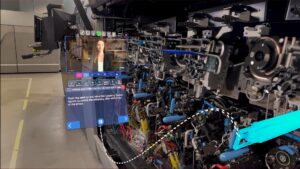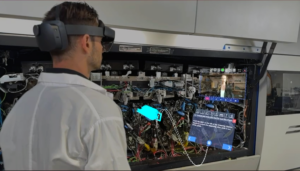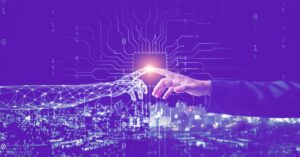How manufacturers can leverage virtual industrial machinery
The stakes have never been higher for industrial manufacturers in improving their product lifecycle management methods. Small to mid-sized businesses should look at how Digital Twin technology might assist them in meeting competition and cost concerns.
Almost every business is adopting digital technology following the COVID-19 pandemic. According to IBM and The Manufacturer’s 2021 Digital Transformation Assessment, 67% of firms have advanced digital initiatives following COVID-19.
Any process, method, or product that can be digitally duplicated is referred to as a digital twin. Digital twins also go by the terms “digital replica” or “virtual twin.” Sensors can capture real-time data about physical elements to bridge the gap between the actual and virtual worlds. The data is then utilized to create a digital clone of the element, opening up new possibilities for enterprises to understand better, control, and improve their operations.

Source: https://www.marketsandmarkets.com/Market-Reports/digital-twin-market-225269522.html
Digital Twin technology can drive VR digital training, AR remote training, and VR remote training, potentially disrupting and revolutionizing the manufacturing industry.
Digital Twins and virtual industrial machinery
Digital replicas may enable businesses to create holograms or digital renderings of actual models when used in conjunction with AR/VR (augmented reality/virtual reality), IoT, and AI/ML. When utilized to manage physical objects in the real world, this technology allows people to work together virtually while collecting sensor data, simulating multiple scenarios quickly, and understanding what-if scenarios better.
New spatial platforms that will enable engineers to interact with virtual representations of their settings via digital twin simulations are becoming increasingly commonplace as leading Industry 4.0 technologies such as AI and 5G emerge.
In 2021, a UK-based vehicle battery manufacturer partnered with BT, Ericsson and NVIDIA to create the first 5G-enabled VR technology to accelerate manufacturing processes. The immersive remote VR training room enables teams to work wherever they are with 3D models of virtual industrial machinery.
By creating a digital replica of a specific physical object, Digitial Twins enable the virtualization of maintenance tasks. Using PCs, tablets, and mobile devices generates digital representations of equipment or machinery. With virtual industrial machinery, engineers can monitor the physical asset’s status and performance history, all without touching the actual physical asset.
For example, organizations may figure out how much work is needed to optimize machinery performance and its usable lifespan before doing any actual work on the item itself. As a result, downtime and interruption are minimized, and the best decisions may be made.
Source: https://www.infoq.com/articles/digital-twin-predictive-maintenance/
With these immediate operational and financial benefits, Digital Twins will provide even more benefits as technology continues to advance through time. Twinning will be essential as we link more IoT endpoints, devices, and physical assets in the factory to convert raw data into meaningful insights.
Digital Twins and VR aircraft engines
More than 13,000 aircraft are flown by the U.S. military, all of which must be maintained to assure mission readiness. High operational availability rates are challenging to attain as the fleet ages, and recently, rates have decreased.
This affects warfighters in two crucial ways. For starters, with more planes in service and more money spent on sustaining them, warfighters have less capability at their disposal. As a result, warfighters cannot keep pace with the ever-evolving dangers they face.
Digital Twins can be the solution to the problem. Reports suggest that the commercial aviation sector can expect a 30% improvement in maintenance, repair and overhaul cycle times using Digital Twins. If companies can understand the condition of assets through their virtual industrial machinery clone, sustainment teams can anticipate when maintenance is required. They can ensure the correct components and personnel are in place proactively.

Source: https://cmte.ieee.org/futuredirections/2018/01/16/the-rise-of-digital-twins/
Even when personnel are not available, AR remote training with Digital Twins can help engineers or pilots get expert support and guidance, supported by images, file sharing and video chat.
A user’s real-world surroundings are overlaid with computer-generated visuals or a graphic interface in augmented reality. All you need is a smartphone or similar device.
Analog or PDF-based machine training has traditionally been the only means of educating teams. This might take a long time to complete. Training time can be reduced by using AR remote training to display essential information and instructions. It may also be used to call attention to certain areas of a system display, making training more straightforward.
VR digital training in manufacturing
Using digital twinning data, plant managers can foresee potential problems and take action before they occur. Similarly, designers may test and upgrade virtual prototypes of new online equipment before investing time and money to construct and operate it in physics.



